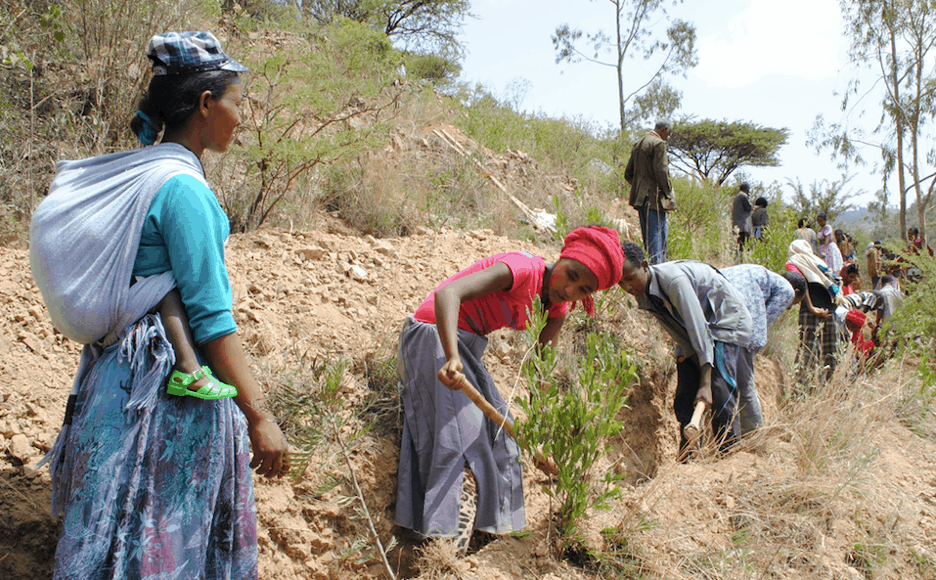Climate-smart agriculture in Ethiopia and beyond: ‘We need to amplify the lessons’
- From
-
Published on
23.06.20
- Impact Area

Jim Hallett of the Society for Ecological Restoration reviews major recent book by World Agroforestry ICRAF, JIRCAS, WeForest and universities.
At first glance, you might think that Climate-smart agriculture: enhancing resilient agricultural systems, landscapes, and livelihoods in Ethiopia and beyond has a narrow focus on agricultural livelihoods in Sub-Saharan Africa, particularly, Ethiopia. But that would be a mistake: its papers present a comprehensive view of what a large proportion of humanity faces.
A product of World Agroforestry (ICRAF), Japan International Research Center for Agricultural Sciences, WeForest and Mekelle and Oregon State universities, Climate-smart agriculture addresses how to ensure ecosystem services and livelihoods in areas particularly vulnerable to land degradation and desertification.
The fragility of these socio-ecological systems comes from dependence on subsistence farming, increased variation in rainfall distribution, and concomitant soil erosion and degradation. Further climate change will result in extreme droughts and floods. And unchecked climate change will shift the climate envelope to a range of temperatures well above those historically habitable by people (Xu et al 2020). Land is likely to be abandoned with ensuing greater desertification and human migration.
This volume recognizes the difficulty and complexity of turning this catastrophe around.
Related news
-

Integrating Climate Security into the Future of UN Peacekeeping in Africa
Ibukun Taiwo30.06.25-
Climate adaptation & mitigation
Explicit mentions of climate security have been removed or weakened in recent UN mandates. For…
Read more -
-

Harnessing digital tools in securing soil health for Africa’s food future
Sehlule Muzata27.06.25-
Climate adaptation & mitigation
-
Environmental health
-
Nutrition, health & food security
-
Poverty reduction, livelihoods & jobs
Nairobi, 27 June 2025 (IITA) - As it marks its first anniversary, the Regional Hub…
Read more -
-

Driving Rwanda’s Agricultural Sector Climate Resilience Through Innovative Business
The Alliance of Bioversity International and the International Center for Tropical Agriculture (CIAT)27.06.25-
Climate adaptation & mitigation
Rwanda’s agriculture is integral to its economy, and its reliance on rain-fed farming systems make…
Read more -
